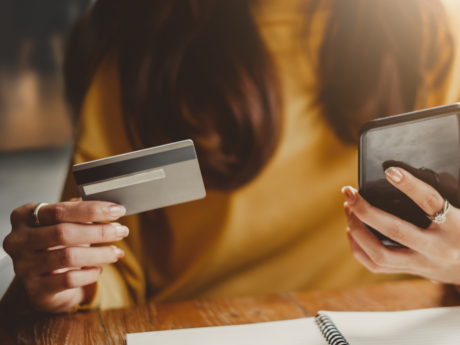How do bankruptcies work in Canada?

Personal bankruptcy is a legal process designed to offer relief to Canadians struggling with overwhelming debt. There are a few ways you can achieve debt freedom, and bankruptcy should be considered a last resort. A debt solutions professional can help you understand what option is best for your financial situation.
Your frequently asked questions about personal bankruptcy:
- How do I start the bankruptcy process?
- How much does it cost to declare bankruptcy?
- What assets can I keep?
- Can I keep my house and car if I file for bankruptcy?
- How long will I be bankrupt?
- What happens to my debt if I declare bankruptcy?
- Are debt collectors in Canada allowed to keep calling me if I declare bankruptcy?
- What happens to my income if I declare bankruptcy?
- Am I allowed to have a bank account if I declare bankruptcy?
- Can I have a credit card if I declare bankruptcy?
- Will my Canadian student loans go away if I declare bankruptcy?
- I owe money to the Canadian Revenue Agency (CRA). Is it included in my bankruptcy?
- What does “discharged” mean?
How do I start the bankruptcy process?
In Canada, the first step in the bankruptcy process is to meet with a Licensed Insolvency Trustee (LIT) for a free, confidential consultation. LITs are regulated by the Office of the Superintendent of Bankruptcy (OSB) and are the only professionals in Canada licensed to administer bankruptcies.
During your consultation, you’ll be asked a series of questions to help us better understand your current financial situation. Generally, we’ll review your assets, debt, income and expenses before providing numbers and timelines. We know this can be a daunting process, and we want you to feel confident in your decision. Don’t be afraid to ask questions! After your finances are reviewed and your questions are answered, your LIT will explain all your financial options, such as filing a consumer proposal or–as a last resort–bankruptcy.
How much does it cost to declare bankruptcy?
There are no upfront costs required to file for bankruptcy. Once you’ve filed, you’ll begin paying a monthly, or bi-weekly, payment which is determined by a set of guidelines regulated by the OSB. The guidelines are based on factors like your income and how many dependents are in your household. All LIT fees are included in the payment amount as well.
There are cases where you may have to pay more than what is set by the OSB’s guidelines. If you make more than the guideline’s standard income, you’ll have to pay surplus income to your creditors. Generally, the surplus amount is the difference between your monthly income and the income standard, divided in half. Half of the amount will go to your creditors and the other half is yours to keep.
Secondly, if you have assets—like a home or car—that you would like to keep throughout the bankruptcy, you’ll have to repay any equity owed to your creditors. The payment amount differs by province and will be discussed in the next section.
During your free consultation, we’ll share an estimate of your monthly payments and confirm them at the time of your signing. Keep in mind, if for any reason your financial situation, dependents, or assets change during your bankruptcy, your payment amount may change as well.
What assets can I keep?
When you file for bankruptcy, certain assets may be sold as repayment to your creditors. In Canada, what assets you can keep during bankruptcy is based on the province or territory you live in. In most cases, assets like household goods, tools of the trade, and RRSPs are exempt.
Secured debt, like a mortgage or vehicle loan, may also be protected during your bankruptcy depending on how much equity is in the asset. If an asset’s value exceeds the limit set by your province or territory, you may be required to “buy out” the equity from your creditors. Alternatively, your LIT can sell the asset and reimburse you the exempt value.
Each province and territory provide a list of exempt assets that you can keep despite declaring bankruptcy.
Can I keep my house and car if I file for bankruptcy?
If you continue payments and fall within your province’s exemption limits, bankruptcy shouldn’t impact your secured debt, like a vehicle loan or mortgage.
If you fall outside your province’s exemptions, you can still work with your LIT to negotiate a way to keep these assets. Oftentimes in these situations, you are better off filing a consumer proposal if you want to keep these assets.
How long will I be bankrupt?
In Canada, bankruptcies are generally nine to 21 months long. If this is your first bankruptcy and you fulfill all your obligations, your bankruptcy can be completed in 9 months. However, your bankruptcy may take longer if you have filed before, have surplus income, or fail to meet your obligations.
If this is your first bankruptcy, but you owe surplus income, your bankruptcy can last up to 21 months (about 2 years).
If it’s your second bankruptcy, you’ll be bankrupt for 24 or 36 months. If you’ve been bankrupt more than once, have not completed your duties, or have committed one or more bankruptcy offences, your bankruptcy timeline will be decided by the court.
Learn more about how long bankruptcy last in Canada.
What happens to my debt if I declare bankruptcy?
Bankruptcy relieves you of most unsecured debt, such as credit card bills, income tax debt, and payday loans. Secured debt, such as your mortgage or car loan, generally aren’t included in a bankruptcy.
Other debt not included in bankruptcy:
- Court-imposed fines
- Debt incurred by misrepresentation (fraud)
- Alimony, child support, or maintenance payments
- Debt for damages imposed by Civil Court for intentional bodily harm, sexual assault, or wrongful death
- Government student loans if your last study date was less than seven years ago.
Are debt collectors in Canada allowed to keep calling me if I declare bankruptcy?
Once your bankruptcy is filed, all creditors and collection agencies are required by law to stop contacting you. Formally, this is called a “Stay of Proceedings”. Additionally, creditors can no longer garnish your wages.
You can, however, continue to receive calls from secured creditors for a mortgage, HELOC, car loan, or debt for alimony or maintenance.
What happens to my income if I declare bankruptcy?
Bankruptcy doesn’t impact your income or your employment status. However, you are required to report your monthly household income and expenses to your LIT throughout your bankruptcy—as well as any changes to your income or dependents.
If your income increases during your bankruptcy, you may have to make monthly payments to your creditors, called “surplus income payments”. Your LIT will calculate these payments based on federal guidelines, your average earnings over the bankruptcy, and the number of people in your household.
Am I allowed to have a bank account if I declare bankruptcy?
Yes, you’re allowed to have a bank account while bankrupt. If you have more than $999 in your account and want overdraft protection, you must notify your bank that you’re bankrupt—but this shouldn’t prevent you from obtaining an account.
When you file for bankruptcy, it’s also recommended that you open a new account at a bank or financial institution that you don’t owe money to, so creditors can no longer take funds directly from your account.
Can I have a credit card if I declare bankruptcy?
No. When you file for bankruptcy, you must hand over all credit cards to your LIT so they can be cancelled. Once your bankruptcy is discharged, you can apply for credit again, but you may be limited to a secured credit card until your credit rating recovers. A secured credit card typically involves pre-payment or a deposit in order to use it.
Your bankruptcy will also be reported on your credit report for up to 7 years after your discharge date. This will negatively impact your credit score and may mean you’ll pay higher interest rates or fees to acquire credit.
Will my Canadian student loans go away if I declare bankruptcy?
If you were a student, either part-time or full-time, and you’ve been out of school for more than seven years by the time you declare bankruptcy, you can include your government student loan debt. Make sure to check with Canada Student Loans to find out what your official last day in school was–also known as your “end study date”. Apprenticeship loans can also be included if you completed your apprenticeship more than 7 years before you declare bankruptcy.
If you’ve been out of school for less than seven years, you may still be able to get your student loan debt discharged. This would require hiring a lawyer and applying in court. You must also meet the following requirements:
- You’ve been out of school for a minimum of five years
- You acted in good faith regarding the liabilities under the loan
- You have and will continue to experience financial difficulty to such an extent that you’ll be unable to pay the liabilities under the loan
Other student funding options like student lines of credit and private student loans can be included in a bankruptcy filing at any time, as long as you are no longer withdrawing from it. Don’t forget to tell your LIT if a parent or loved one has cosigned on any student loan.
I owe money to the Canadian Revenue Agency (CRA). Is it included in my bankruptcy?
Many people assume that income tax debt is not included in bankruptcy. However, your tax debt to the Canadian Revenue Agency (CRA) is treated the same as any other unsecured debt. In addition, after filing for bankruptcy, all interest, wage garnishment and other collection activity by the CRA will stop.
What does “discharged” mean?
When you’re “discharged” from bankruptcy, it means you’ve met all your responsibilities, and your bankruptcy is complete. You’ll receive an “Absolute Discharge”, and you’ll no longer be responsible for the debt included in your bankruptcy.
If you don’t meet your responsibilities during bankruptcy, you won’t be discharged, your LIT will close your file, and creditors can resume collection efforts against you.
Take the first step to debt freedom
Speak to one of our debt solutions professionals during a free, no-obligation consultation.
Related articles
Loading







